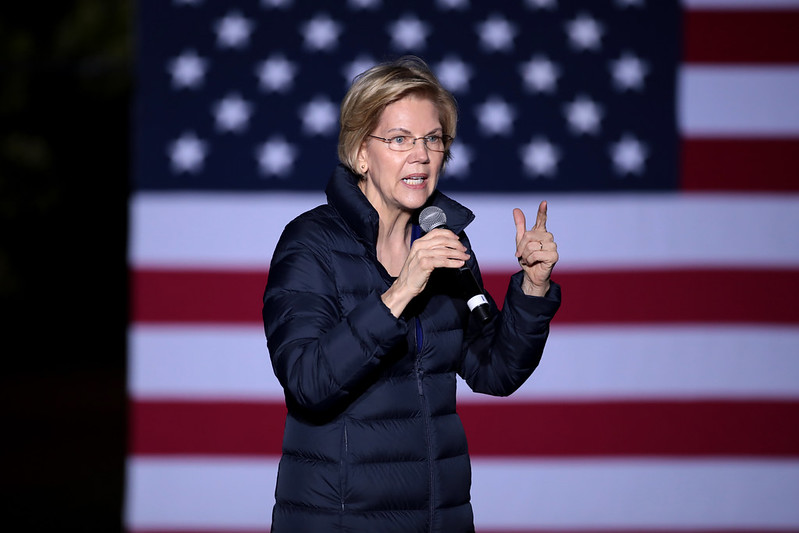The structural barriers women face in elected office demand structural solutions—and the elected bodies won’t reach gender balance in our lifetimes until far more women run for office.

In 1923, suffragist and ERA author Alice Paul wrote, “My hope is that a hundred years from now the world will no longer be a man’s world, but a woman’s and man’s world with each sex participating equally in the control of government.” Ninety-eight years later, women make up less than 30 percent of U.S. elected officials and no woman has served as president. Where did the U.S. go wrong? And how can activists and legislators correct the mistakes made, ensuring women are equally represented in America?
To answer this question, throughout Women’s History Month, Ms. and RepresentWomen are proud to present this series focusing on four steps the U.S. can—and should—take to increase the number of women in elected office and leadership positions:
- Women Run: including gender-inclusive and diverse quotas for races, as well as recruitment and funding targets.
- Women Win: learning from other countries’ electoral systems and strategies which allow women to win at higher rates than they do in the U.S.
- Women Serve: ensuring a living wage and modernized workplace rules like proxy or remote voting, paid family leave and on-site child care.
- Women Lead: creating diversity at the top decision-making levels by appointing gender-balanced and diverse Cabinets and staff.
Get caught up here.
The 2020 election cycle made many headlines over the past year, and one common refrain from feminist publications was the record number of women running for elected office—a refrain, which while factually correct, glosses over the continued gap between the number of women running for office compared to the number of men. At the national level, 344 women ran for office while 684 men ran, once again making up the majority of Congressional candidates.
Women make up 51 percent of the U.S. population and less than 30 percent of all elected officials—a discrepancy that demands structural changes to correct. But an easy first step is ensuring women make up at least half of all candidates. Political gatekeepers including political parties, PACs, individual donors and recruitment organizations all have a role to play in improving the rate at which women run for office.
Setting Recruitment Targets
While men tend to be more likely to nominate themselves to run for elected office, many women don’t see themselves as viable candidates until they are asked to run for office. And a large number of women candidates must be asked or told to run multiple times before taking the plunge.
Political parties in other countries have had success troubleshooting recruitment strategies for women, which both the Democratic and Republican parties can learn from. During the 2019 Canadian elections, women made up 49 percent of the New Democratic Party’s fielded candidates outperforming many of the other parties for women’s representation. Their strategy? “We’ve gone back to women a number of times—eight to 10 times at least,” said Melissa Bruno, NDP’s national director.
U.S. political parties and candidate recruitment organizations must commit to recruitment targets for women and alter their traditional outreach strategies to address the concerns women have about running for office. Political parties can go so far as to adopt gender inclusive quotas for down-ballot races ensuring women and non-binary folk alike are recruited to run at higher rates—a step the Democratic Party has already taken for state delegations to the national convention held every four years.
Setting Funding Targets
Despite the growing grassroots and PAC donations every election cycle, women continue to raise on average less than men. PACs and large individual donors give most of their donations to incumbent candidates who with a success rate of 96 percent are nearly guaranteed to keep their seats.
While this seems like a gender-neutral problem, the majority of incumbents are cis, white and male. Women on the other hand are more likely to run in open seats or as challengers with smaller donor networks and fewer financial resources amplifying the structural benefits already enjoyed by incumbents.
In 2020, 61 percent of PAC donations went to men running for Congress, compared to only 39 percent spent on women Congressional candidates. While there questions remain over the influence money should have on our politics, money continues to play an important role in determining candidate viability especially for candidates running in open-seats and as challengers.
As the U.S. celebrates Women’s History Month, it’s easy to focus on the historic victories women have achieved and a few choice women leaders who have gained widespread recognition, wall-papering over the continued hurdles women face to gaining equality and fair representation in government. The structural barriers women continue to face in elected office demand recognition and structural solutions, and the elected bodies won’t reach gender balance in our lifetimes until far more women run for office.
Up next:





